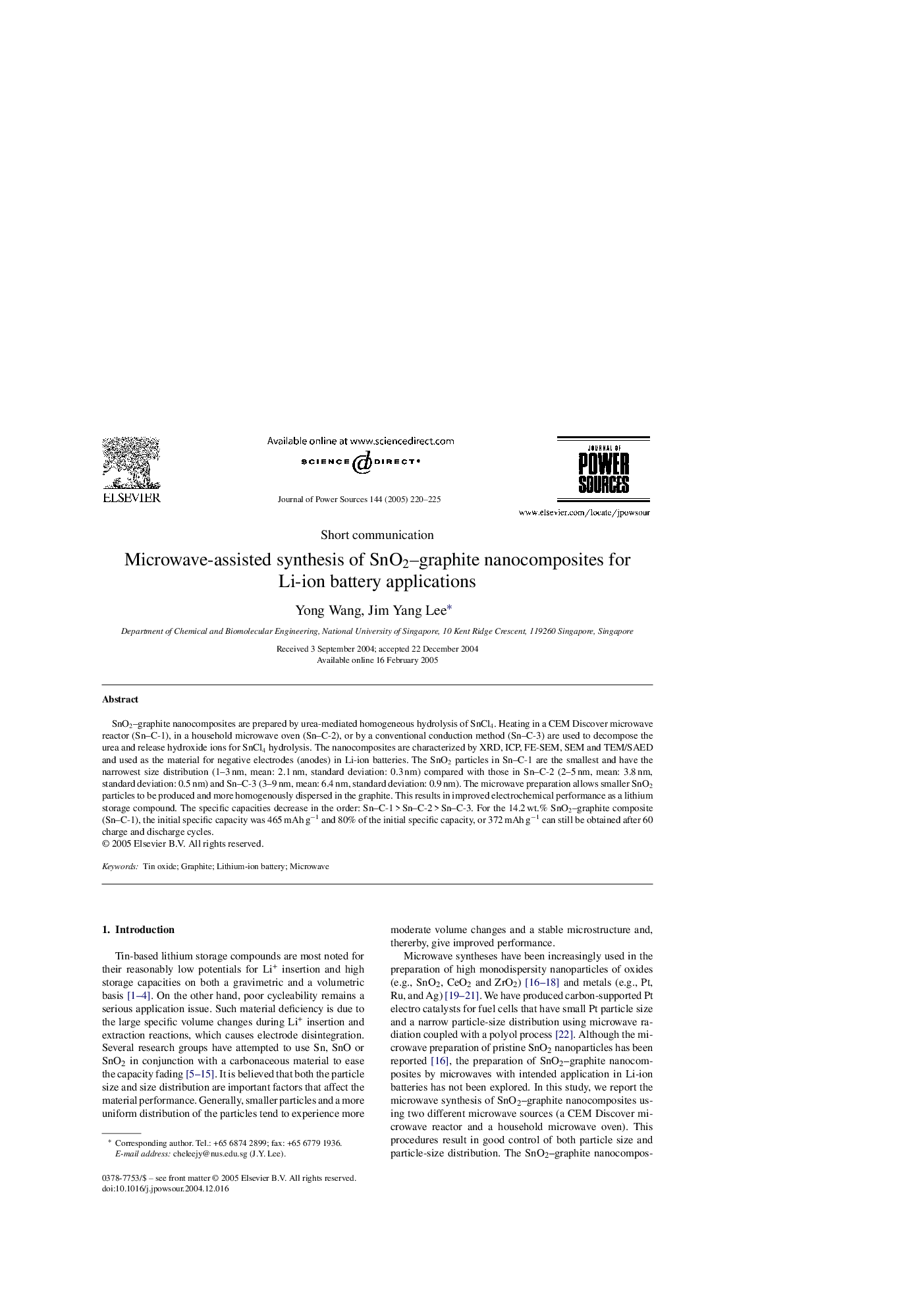| کد مقاله | کد نشریه | سال انتشار | مقاله انگلیسی | نسخه تمام متن |
|---|---|---|---|---|
| 10567384 | 973252 | 2005 | 6 صفحه PDF | دانلود رایگان |
عنوان انگلیسی مقاله ISI
Microwave-assisted synthesis of SnO2-graphite nanocomposites for Li-ion battery applications
دانلود مقاله + سفارش ترجمه
دانلود مقاله ISI انگلیسی
رایگان برای ایرانیان
کلمات کلیدی
موضوعات مرتبط
مهندسی و علوم پایه
شیمی
الکتروشیمی
پیش نمایش صفحه اول مقاله

چکیده انگلیسی
SnO2-graphite nanocomposites are prepared by urea-mediated homogeneous hydrolysis of SnCl4. Heating in a CEM Discover microwave reactor (Sn-C-1), in a household microwave oven (Sn-C-2), or by a conventional conduction method (Sn-C-3) are used to decompose the urea and release hydroxide ions for SnCl4 hydrolysis. The nanocomposites are characterized by XRD, ICP, FE-SEM, SEM and TEM/SAED and used as the material for negative electrodes (anodes) in Li-ion batteries. The SnO2 particles in Sn-C-1 are the smallest and have the narrowest size distribution (1-3 nm, mean: 2.1 nm, standard deviation: 0.3 nm) compared with those in Sn-C-2 (2-5 nm, mean: 3.8 nm, standard deviation: 0.5 nm) and Sn-C-3 (3-9 nm, mean: 6.4 nm, standard deviation: 0.9 nm). The microwave preparation allows smaller SnO2 particles to be produced and more homogenously dispersed in the graphite. This results in improved electrochemical performance as a lithium storage compound. The specific capacities decrease in the order: Sn-C-1 > Sn-C-2 > Sn-C-3. For the 14.2 wt.% SnO2-graphite composite (Sn-C-1), the initial specific capacity was 465 mAh gâ1 and 80% of the initial specific capacity, or 372 mAh gâ1 can still be obtained after 60 charge and discharge cycles.
ناشر
Database: Elsevier - ScienceDirect (ساینس دایرکت)
Journal: Journal of Power Sources - Volume 144, Issue 1, 1 June 2005, Pages 220-225
Journal: Journal of Power Sources - Volume 144, Issue 1, 1 June 2005, Pages 220-225
نویسندگان
Yong Wang, Jim Yang Lee,